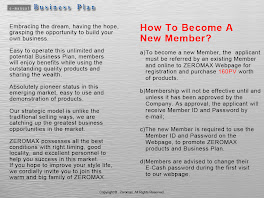THE ART OF PERSUASION: PART 1 OF 2
When was the last time you persuaded someone who turned you down? You may have tried to persuade others to offer you a job, buy your products or accept your point of view.
Persuasion is useful in interviews, sales, negotiation, mentoring and presentation. But unfortunately, persuasion is seldom taught, and it remains a mysterious science and art.
Neuro-linguistic Programming (NLP) is one of the leading technologies in persuasion. It was founded in the 1970s by undergraduate Richard Blander and linguistic professor John Grinder, both from the University of California.
In NLP, the meaning of communication is in the response you get. Traditionally, persuasion focused on the speaker, dressing, voice, content, logistic and audio-visual aids.
The most significant component – the response of the audience – was ignored. But if you fail to persuade others, all other resources, no matter how extensive, will be wasted.
PERCEPTION AND MAPS
In NLP, there are five representation systems from where your mind receives and process information – VAKOG (visual, auditory, kinesthetic, olfactory and gustatory). The first three are the major systems. How a person thinks is the result of his perception. Perception is the information gathered by the five representation systems.
Since every person has different perceptions and operates from different maps, you should try to see other people’s model of the world and respect and understand their maps.
FORM YOUR OUTCOME
Before you persuade, decide on the outcome or result you want, such as what you like to see happen, the way you want to feel and what you want to hear. In NLP, the more well formed the outcome, the more you will be able to persuade. Be specific and positive. Where are you now before your persuasion? What would you like to see after your persuasion?
Linguist Alfred Korzybski emphasized that the words you use to describe your outcome essentially determine whether you achieve it.
PERCEPTUAL POSITIONS
In NLP, there are three positions from where you send your messages:
1. You are looking from your own perspective. It is a selfish and narrow-minded position. It is like a frog dwelling in a well and looking out into the sky with tunnel vision. You ask yourself:”How can I persuade this person?”
2. You are sitting in your listener’s seat. You consider how your message will look, sound or feel from his point of view. You see from his eyes, hear from his ears and feel with his heart.
This position enables you to experience empathy and appreciate how he feels about your persuasion. You ask yourself: “How would I want to be persuaded if I were the recipient of the message?”
As a Red Indian adage goes: You cannot understand another person until you have walked a thousand miles in his moccasins.”
3. You are dissociating yourself from the entire conversation. You become an observer or consultant looking at the communication neutrally and independently.
You view your audience without any preconceived notions. You are non-judgmental and ask yourself: “How would this conversation look like to someone who is totally uninvolved?”
When you speak from the second and third positions, you become more persuasive because you understand your audience better.
WORK AT IT
1. The root word for “rapport” comes from the French verb, rapporter, which means “to bring back”. Rapport is the process of building a relationship based on understanding and trust. It is n extension of what people do naturally and unconsciously.
Have you ever met a stranger for the first time and felt really at ease? You find yourself relating very well to him, as if you gave known him for years. That is rapport.
Rapport is a state where people get on well with one another. People tend to build good rapport when they have similar interests, such as similar tastes in fashion, food and music, beliefs, values and levels of complexity in process information.
If you do not have “automatic” rapport with others, you can create it – by making yourself like the other person or matching what he does.
VALUE OF MATCHING
Match the other person’s non-verbal skills – his physiology, posture, breathing, voice quality (tonality, speed, volumes and rhythm) and gestures.
Check if he is angry, sad, anxious or calm. Match his emotional states as well.
Match his predicates. If he speaks in visual terms, then you should speak visually too when you want to persuade him.
When you match the other person for a long time, it is called pacing. This is where you start to persuade the other person by incrementally changing an aspect of your communication.
Matching is not mimicking or monkeying. Do not exaggerate. Otherwise, the matching process becomes scripted and staged.
Match naturally – do things in a synchronized way. If you speak and gesture naturally, the other party will be more ease with you.
Source: The Star Newspaper
Article contributed by Michael Lum, a certified American of NLP trainer and coach.
Salaam
Hj Md Hatta
019-3089268
hattabasir@gmail.com
Friday, January 16, 2009
The Art Of Persuasion - Part 1
Subscribe to:
Post Comments (Atom)












No comments:
Post a Comment